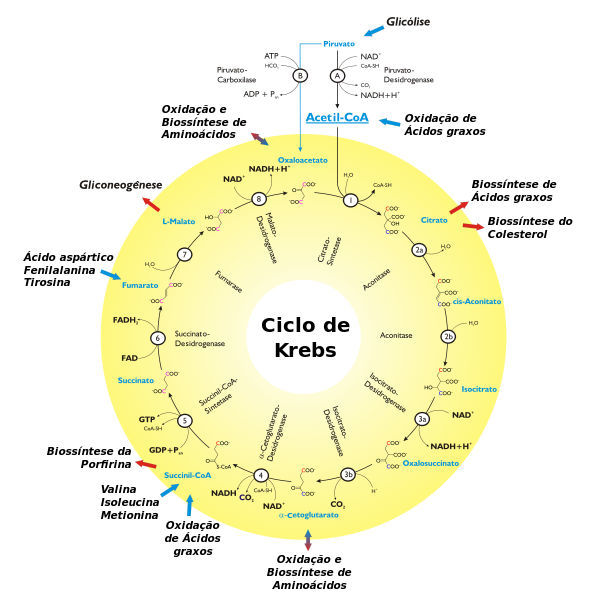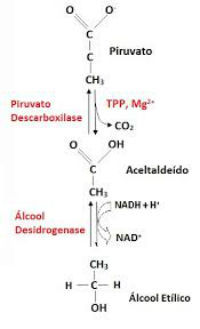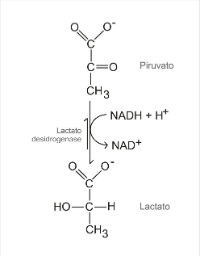Energy metabolism is the set of chemical reactions that produce the energy necessary to carry out the vital functions of living beings.
Metabolism can be divided into:
- Anabolism : Chemical reactions that allow the formation of more complex molecules. They are synthesis reactions.
- Catabolism : Chemical reactions for the degradation of molecules. These are degradation reactions.
Glucose (C 6 H 12 O 6 ) is the energy fuel for cells. When it is broken it releases energy from its chemical bonds and waste. It is this energy that allows the cell to perform its metabolic functions.
ATP: Adenosine Triphosphate
Before understanding the processes of obtaining energy, you must know how the energy is stored in the cells until use.
This occurs thanks to ATP (Adenosine Triphosphate), the molecule responsible for the capture and storage of energy. It stores in its phosphate bonds the energy released in the breakdown of glucose.
ATP is a nucleotide that has adenine as its base and ribose with sugar, forming adenosine. When adenosine joins three phosphate radicals, adenosine triphosphate is formed.
The link between phosphates is highly energetic. Thus, the moment the cell needs energy for some chemical reaction, the bonds between the phosphates are broken and the energy is released.
ATP is the most important energy compound in cells.
However, other compounds should also be highlighted. This is because during the reactions, hydrogen is released, which is mainly transported by two substances: NAD + and FAD.
Mechanisms for obtaining energy
The energy metabolism of cells occurs through photosynthesis and cellular respiration.
Photosynthesis
The Photosynthesis is a process of synthesis of glucose from carbon dioxide (CO 2 ) and water (H 2 O) in the presence of light.
It corresponds to an autotrophic process carried out by beings that have chlorophyll , for example: plants, bacteria and cyanobacteria. In eukaryotic organisms, photosynthesis occurs in chloroplasts .
Cellular respiration
The cellular respiration is the process of breaking the molecule of glucose to release the energy is stored therein. It occurs in most living things.
It can be done in two ways:
- Aerobic breathing : in the presence of oxygen gas from the environment;
- Anaerobic breathing : in the absence of oxygen gas.
Aerobic respiration occurs through three phases:
Glycolysis
The first stage of cellular respiration is glycolysis , which occurs in the cytoplasm of cells.
It consists of a biochemical process in which the glucose molecule (C 6 H 12 O 6 ) is broken down into two smaller molecules of pyruvic acid or pyruvate (C 3 H 4 O 3 ), releasing energy.
Krebs cycle

The Krebs Cycle corresponds to a sequence of eight reactions. It has the function of promoting the degradation of end products of the metabolism of carbohydrates, lipids and several amino acids.
These substances are converted to acetyl-CoA, with the release of CO 2 and H 2 O and synthesis of ATP.
Em resumo, no processo o acetil-CoA (2C) será transformado em citrato (6C), cetoglutarato (5C), succinato (4C), fumarato (4C), malato (4C) e ácido oxalacético (4C).
O ciclo de Krebs ocorre na matriz mitocondrial.
Oxidative Phosphorylation or Respiratory Chain

The oxidative phosphorylation is the final stage of energy metabolism of aerobic organisms. It is also responsible for most of the energy production.
During the glycolysis and Krebs cycle, part of the energy produced in the degradation of compounds was stored in intermediate molecules, such as NAD + and FAD.
These intermediate molecules release energized electrons and H + ions that will pass through a set of carrier proteins, which make up the respiratory chain.
Thus, electrons lose their energy, which is then stored in ATP molecules.
The energy balance of this stage, that is, what is produced throughout the electron transport chain is 38 ATPs.
Energy balance of Aerobic Breathing
Glycolysis :
4 ATP + 2 NADH – 2 ATP → 2 ATP + 2 NADH
Krebs cycle : Since there are two pyruvate molecules, the equation must be multiplied by 2.
2 x (4 NADH + 1 FADH2 + 1 ATP) → 8 NADH + 2 FADH2 + 2 ATP
Oxidative phosphorylation :
2 NADH of glycolysis → 6 ATP
8 NADH of the Krebs cycle → 24 ATP
2 FADH2 of the Krebs cycle → 4 ATP
Total of 38 ATP’s produced during aerobic respiration.
Anaerobic respiration has the most important example of fermentation:
Fermentation
The fermentation is merely the first stage of cellular respiration, i.e. glycolysis.
Fermentation occurs in hyaloplasm , when oxygen is not available.
It can be of the following types, depending on the product formed by the degradation of glucose:
Alcoholic fermentation : The two pyruvate molecules produced are converted into ethyl alcohol, with the release of two CO 2 molecules and the formation of two ATP molecules. It is used for the production of alcoholic beverages.

Lactic fermentation : Each pyruvate molecule is converted into lactic acid, with the formation of two ATP molecules. Lactic acid production. It occurs in muscle cells when there is excessive effort.

Vestibular Exercises
1. (PUC – RJ) These are biological processes directly related to cellular energy transformations:
a) breathing and photosynthesis.
b) digestion and excretion.
c) breathing and excretion.
d) photosynthesis and osmosis.
e) digestion and osmosis.
Answer
a) breathing and photosynthesis.
2. (Fatec) If muscle cells can obtain energy through aerobic respiration or fermentation, when an athlete passes out after a 1000 m run, due to lack of adequate oxygenation of his brain, the oxygen gas that reaches the muscles also does not is sufficient to supply the respiratory needs of muscle fibers, which start to accumulate:
a) glucose.
b) acetic acid.
c) lactic acid.
d) carbon dioxide.
e) ethyl alcohol.
Answer
c) lactic acid.
3. (UFPA) The cellular respiration process is responsible for (a)
a) consumption of carbon dioxide and release of oxygen to the cells.
b) synthesis of organic molecules rich in energy.
c) reduction of carbon dioxide molecules in glucose.
d) incorporation of glucose molecules and carbon dioxide oxidation.
e) release of energy for cellular vital functions.
Answer
e) release of energy for cellular vital functions.
